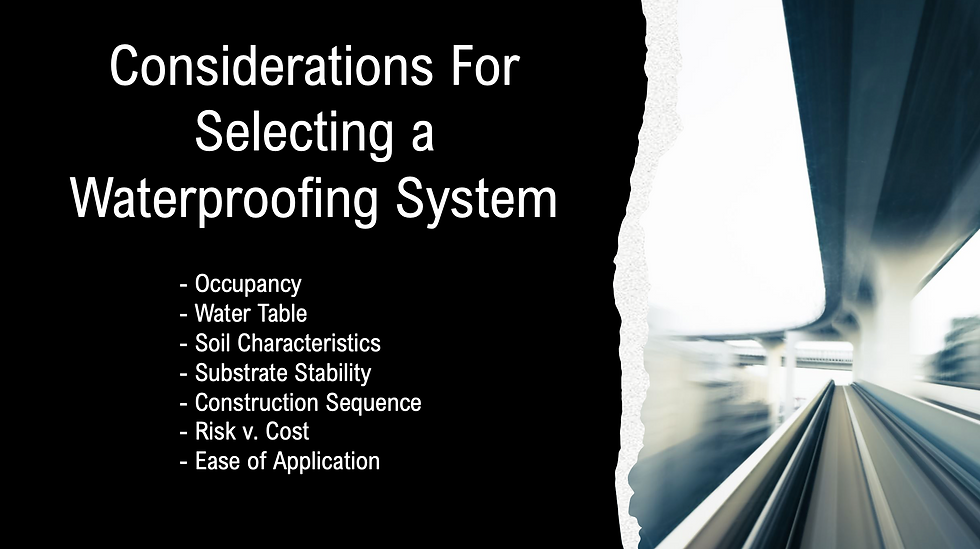Foundation Waterproofing
- IWS
- May 1, 2019
- 3 min read
Updated: Jan 4, 2020
A building or home foundation is what keeps a building stable and in place, transferring the dead and live loads into the ground. It is a very important part of the structure and most all foundation problems have to do with the infiltration of water. In extreme cases the foundation can crack or break and sink in places causing wall, window and door frames to warp. In certain areas elaborate drainage systems are required, along with a waterproofing system that includes: a water-tight membrane, drainage board and protective materials installed to exterior of the foundation to protect it from water damage. In other situations, all that is required for protection is a damp proofing emulsion applied to exterior surface of the foundation.
Foundations built of typical concrete are not waterproof, concrete is somewhat porous, water will seep into the capillaries of concrete and eventually crack and erode the material. Also, water will permeate the foundation in the form of water vapor and create problems in the interior space of a structure. At any rate, keeping water from entering a foundation is essential to the integrity of any structure. Waterproofing or damp proofing is of major importance in maintaining the structural integrity of a building and keeping interior spaces free of mold, mildew and damp conditions that are unpleasant to occupants. Shrinkage cracks are also a common occurrence with poured slab foundations. Although, these cracks are typical and not usually a sign of a structural issues, they should be filled to prevent water from entering the foundation.
In many states building code requires damp proofing, which is typically an emulsion coating applied to the exterior surface of the foundation. Damp proofing protects the foundation from soil moisture and could be enough depending on the building location. While damp proofing is sometimes mistakenly referred to as waterproofing, true waterproofing will not only protect against soil moisture but also liquid water that can enter the building by permeating the concrete and eventually leading to cracking and deterioration.
In the do-it-yourself realm, many homeowners and small business owners’ resort to using waterproofing paint on the interior walls of damp basements. While this can minimize dampness in the interior of the building temporarily, it does not stop water from entering porous or cracked concrete. Depending on severity of the issue this can accelerate the disintegration of the foundation by trapping the water in the concrete. It is always best to address the problem of water infiltration at its source, which is typically the exterior of the structure.
Innovative Waterproofing Solutions’ waterproofing products are premium commercial grade products that have been trusted and used by quality contractors on large scale restoration projects. They are now available in gallon pails for smaller projects and residential use. These products are safe, environmentally friendly, no-fume, water-based, industrial strength waterproofing materials that can be applied with a brush or roller. They have excellent adhesion to concrete and create a rubber barrier that blocks out water intrusion.
Adhesion to concrete is a critical component of a waterproofing membrane and IWS waterproofing products have an excellent adhesion rate - one of the highest in the industry. As part of the testing for Miami Dade approval, a Bonded Pull Test is required (TAS 114 App. D) over concrete. The IWS Waterproofing product tested between 660.0 PSF (pounds per sq. ft.) and 825.0 PSF. There was no failure of the IWS material - as it remained fully adhered throughout the test process. The actual failure occurred when the test apparatus broke at the plywood base before it could pull the material from the concrete. Whew! That’s some adhesion!
Connect with us at: WaterproofingRedefined.com/contact







Comments